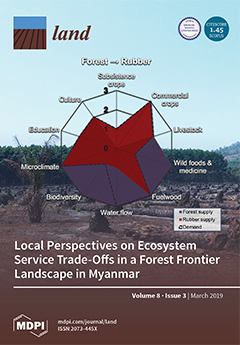Tick Bite Risk as a Socio-Spatial Representation—An Exploratory Study in Massif Central, France
Ticks are responsible for the largest number of transmissions of vector-borne diseases in the northern hemisphere, which makes the risk from tick bites a serious public health problem. Biological scientific research and prevention studies are important, but they have not focused on the population’s perception of tick bite risk, especially at a spatial level.



